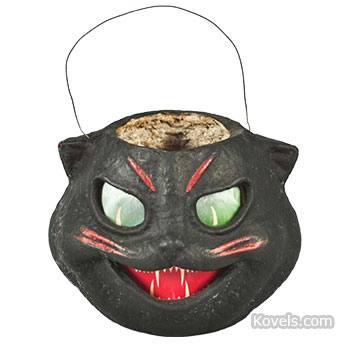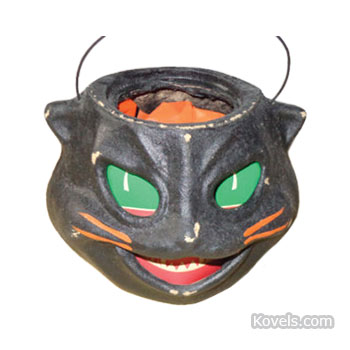Those who love vintage Halloween collectibles, however, need to be wary. Halloween collectibles from the early 20th century were cheap and disposable. So perfect German-made candy containers, figurals and mechanicals (moving) items, or U.S.-made pulp (egg carton material) lanterns may be fake. The “golden age” of Halloween collectibles is pre-1930s.
Mark B. Ledenbach author of “Vintage Halloween Collectibles” said, “If you see something for sale that is perfect, you need to be on your guard.” Old Halloween items have flaking paint, chips and water stains.
The top Halloween collectibles are made by German artists, and from Beistle Co. of Pennsylvania and Dennison Manufacturing Co. of Massachusetts. Dennison built its business on costumes, pumpkin-themed party invitations, die-cut ghosts and orange-and-black table decorations.
When buying a Halloween collectible, ask where the seller got the item. “If they say from a warehouse in Germany, run away,” says Ledenbach. “That is the oldest fake answer in the book. German Halloween items made in the late teens (1916-1919) through 1935 were made for export only. Germans didn’t celebrate Halloween. They needed money after World War I and Halloween was a money-maker.”
Fakes can be very good. Be particularly wary of mechanical items. They can be reproduced using old and new parts. The clothes can be old, but the mechanisms can be new. Don’t buy mechanicals unless you have an expert examine it first, or you get a “Right to Return” from seller.





Leave a Reply
You must be logged in to post a comment.